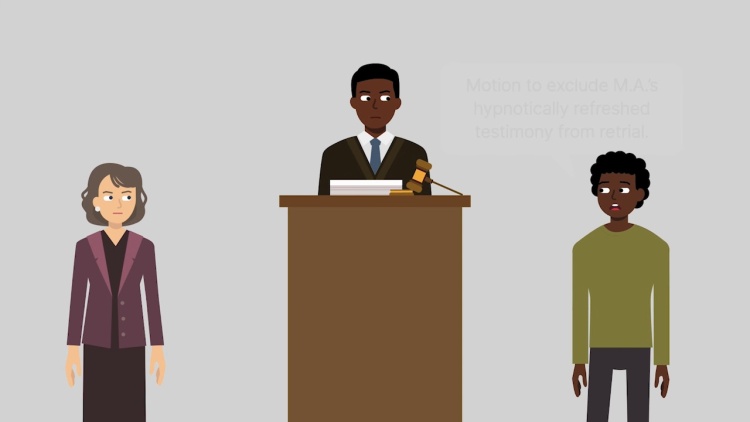State v. Moore
New Jersey Supreme Court
188 N.J. 182, 902 A.2d 1212 (2006)

- Written by Sean Carroll, JD
Facts
Moore (defendant) allegedly sexually assaulted M.A. in her bedroom. However, when the assault occurred it was dark, M.A. was not wearing her contact lenses, and her eyes were closed for the entire incident except for a brief moment. As a result, at first, M.A. could not provide sufficient information for a composite sketch of the assailant. However, after being hypnotized and asked about the incident, M.A. was able to remember the assailant’s face much more clearly and provide more detail. Subsequently, M.A. chose Moore out of a photo array and later identified him at trial. Historically, post-hypnotic testimony was governed by State v. Hurd, 86 NJ 525 (1981), which provided guidelines to control the possible harmful effects of such post-hypnosis testimony. At trial, Moore was convicted, but the court of appeals threw out the conviction due to prosecutorial misconduct. The Supreme Court of New Jersey then directed the trial court to hold a plenary hearing on the question of whether the guidelines from Hurd remained “valid and appropriate.” On remand, the trial court held that hypnotically refreshed testimony should be excluded, and that even if it were not entirely excluded, M.A.’s testimony did not comply with the guidelines in Hurd. The prosecution appealed.
Rule of Law
Issue
Holding and Reasoning (Poritz, C.J.)
Concurrence (Rivera-Soto, J.)
What to do next…
Here's why 899,000 law students have relied on our case briefs:
- Written by law professors and practitioners, not other law students. 47,000 briefs, keyed to 994 casebooks. Top-notch customer support.
- The right amount of information, includes the facts, issues, rule of law, holding and reasoning, and any concurrences and dissents.
- Access in your classes, works on your mobile and tablet. Massive library of related video lessons and high quality multiple-choice questions.
- Easy to use, uniform format for every case brief. Written in plain English, not in legalese. Our briefs summarize and simplify; they don’t just repeat the court’s language.





